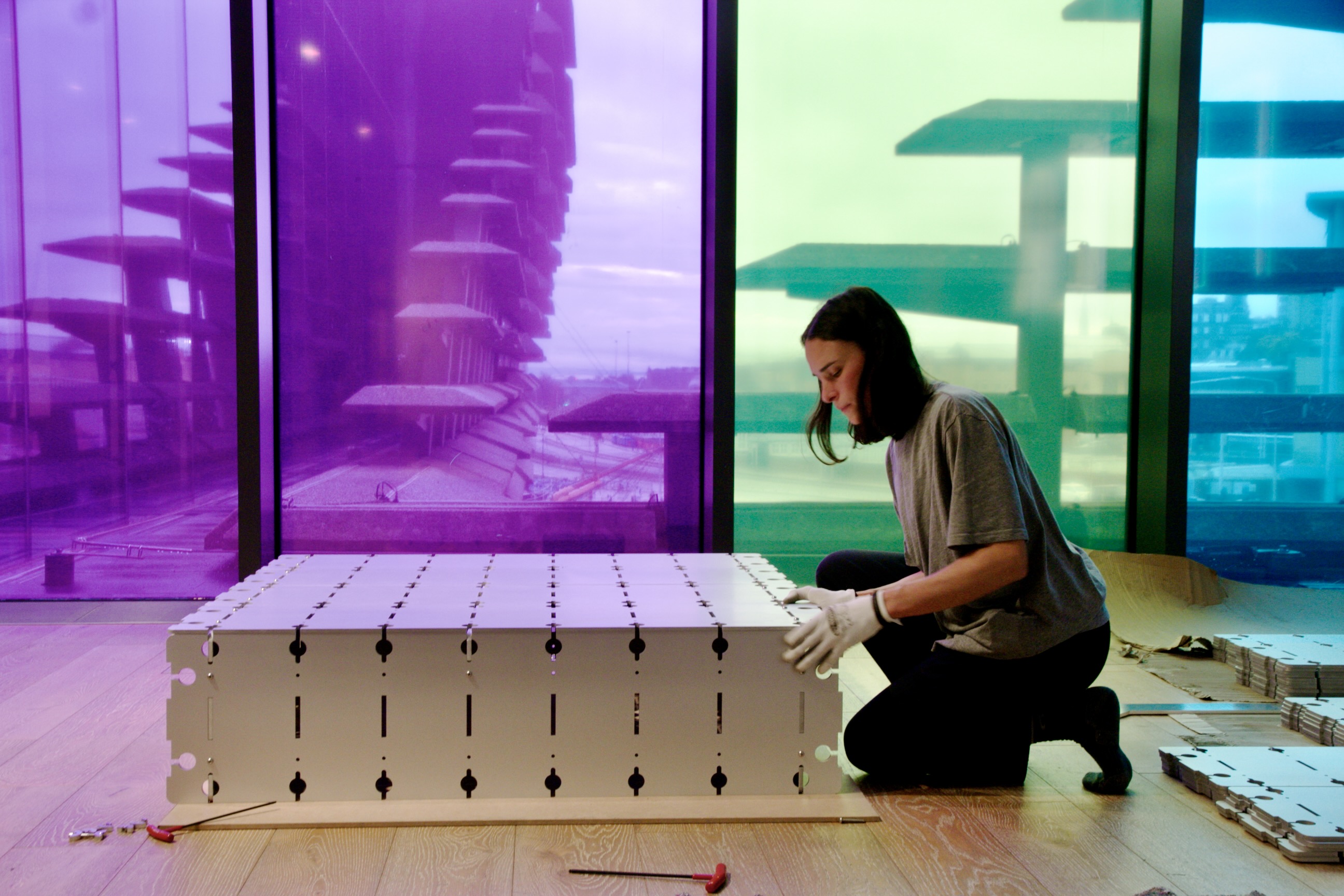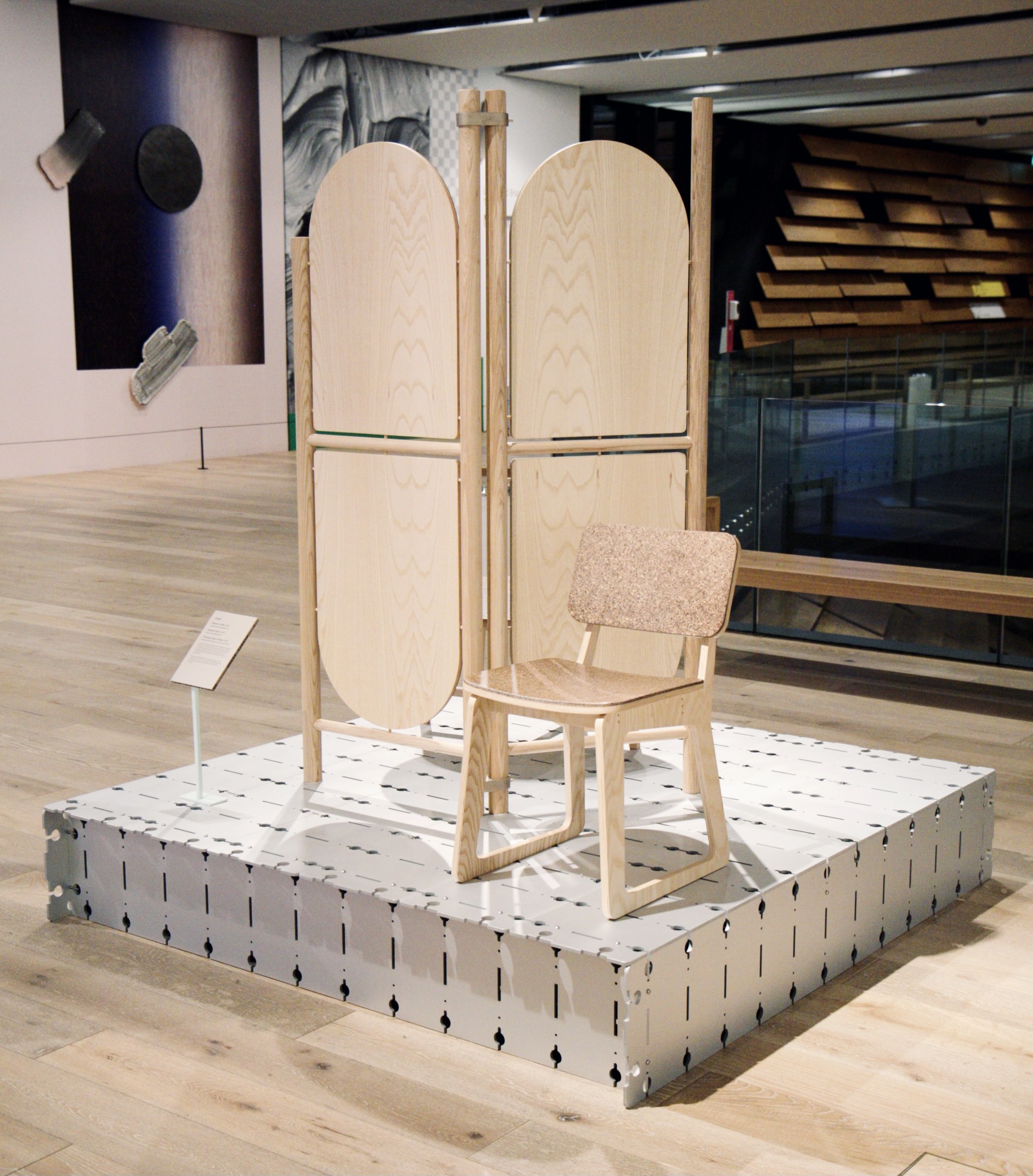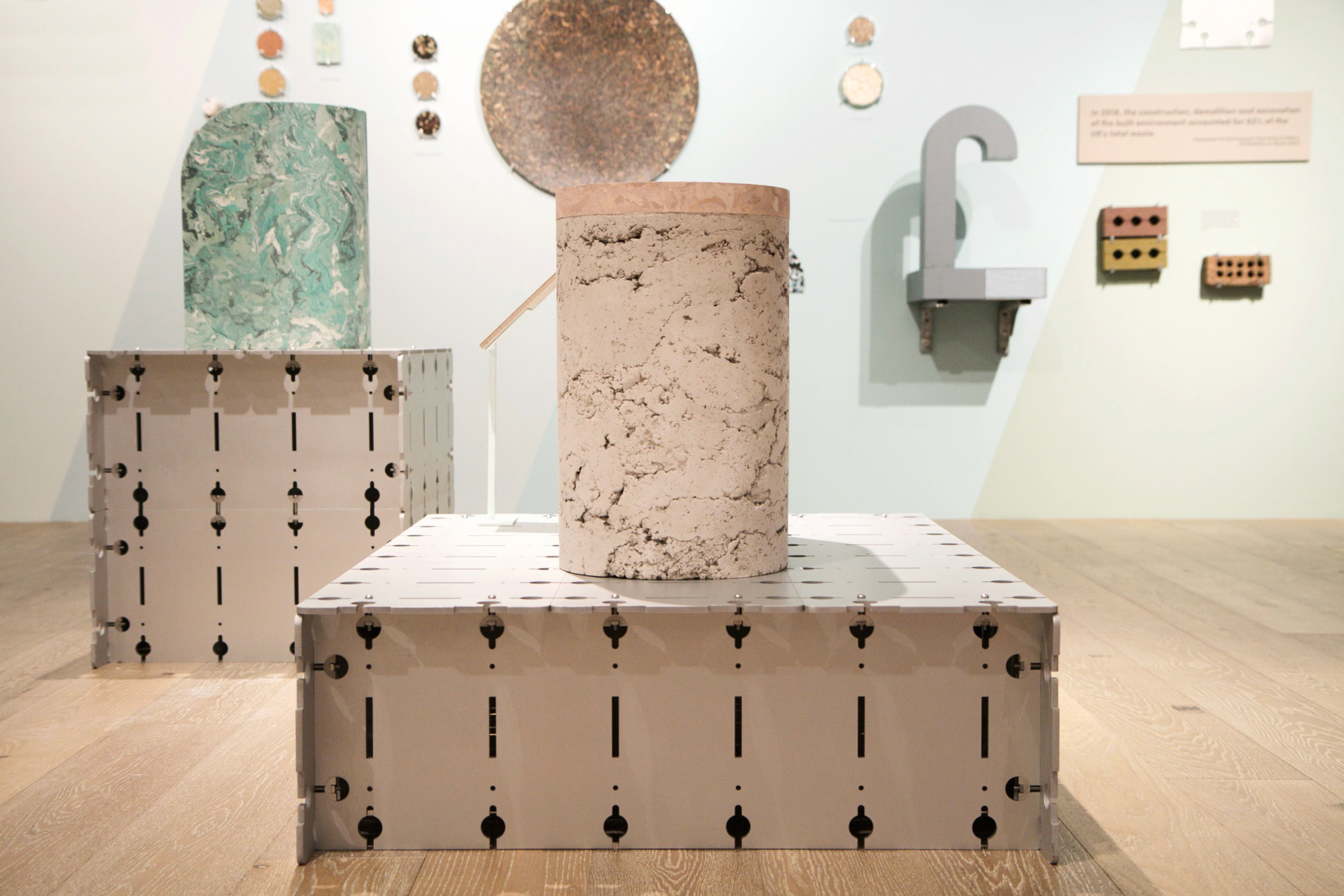◇ Temporary exhibitions typically require bespoke display elements specific to
the exhibition design. Due to this specificity, these structures are frequently
single use - often discarded at the end of a show as waste, where they will be
sent to landfill or incineration. A common material used in their construction
is manufactured board (such as MDF), which emits hazardous chemicals into the
surrounding environment.
◆ How can we make exhibition practice more responsible and sustainable?
◇ Our approach was to research ideas of reusability and how designing for
circular economic principles manifest. Our aim was for the design artefacts to
act as a concept of how we might encounter a post-waste future, where waste
isn’t an option and to create a visual narrative of how that might look and
function - and in doing so, designing out waste.
◇ Our ambition was to create a reusable system that could be utilised in
different spatial situations and exhibition environments; that could be easily
disassembled after a show and reassembled in another context.
◇ We started by deconstructing and reframing the traditional display plinth,
thinking about it cut into sections; as planks of material that could be
reassembled along their edges into various configurations.
◇ This led to a modular system consisting of panels of a fixed width with
varying lengths determined by simple multiples, which allows the size of the
plinths to be scaled using any combination of the panels. After use, the plinth
can be taken apart and efficiently stored or transported in a flat-pack form,
before being reused.
◇ To maximise future utilisation, the panels are also designed for repurposing
into something else, for example a planter or a bookcase (see below).
◇ An important consideration was that the design was simple to assemble and
disassemble, therefore minimising future barriers in the reuse of the panels.
The perforations act as registration points at which the panels are joined,
revealing the method of construction and making it a visually intuitive
assembly process.
◇ We wanted to celebrate fasteners as an important aspect of the ease of reuse
and repair and how universal off-the-shelf components utilise standardised
tools for (dis)assembly - in this case socket head screws that require the
ubiquitous Allen key. The half-round washers drew from the kitchen worktop
connector, used to connect sheet material along its edge.
◇ The panels consist of a singular material in order to reduce the complexity
of the recycling process. Also, the plinths had to perform structurally as well
as or better than their single-use counterparts whilst being manoeuvrable. We
selected aluminium as a potential material for its high strength to weight
ratio, durability and that it can be recycled indefinitely.
◇ The distribution of the design means that a product can be manufactured
locally to its point of use, rather than shipping physical components. To
facilitate distributed manufacturing, it was important to choose commonly
available manufacturing processes that don’t require bespoke tooling. Digital
manufacturing is particularly suited as files can be shared online, dowloaded
and CNC cut or 3d printed with minimal labour and therefore costs, making it
more accessible.
◇ Our intention is for this project to act as a prototype to be iterated upon
and developed by others who might benefit from this concept - such as other
exhibition designers for gallery institutions and organisations. We believe
that by sharing design, we can accelerate innovation towards a better future
for people and planet.









